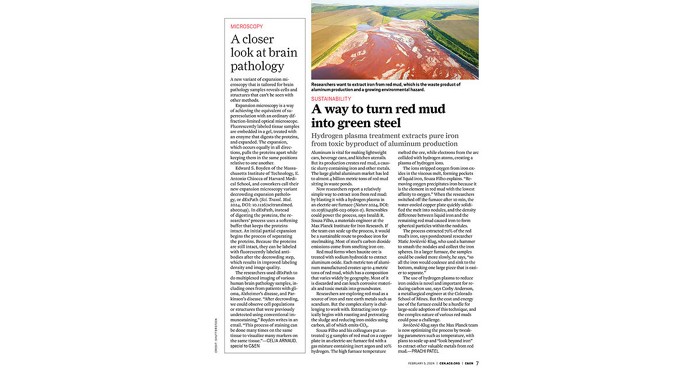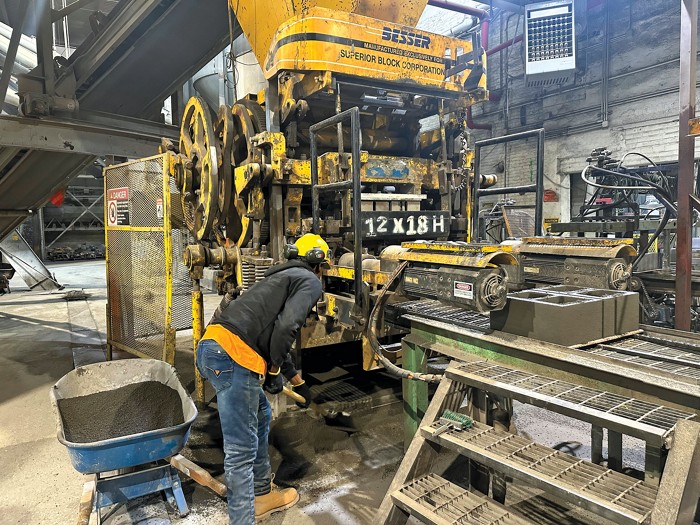Growing up and being exposed to a myriad of cultures overseas, Sherine Obare knew she wanted to attend a college where she would be surrounded by similar faces. She credits her time spent at West Virginia State University, a historically Black university, for instilling in her the confidence necessary to succeed. Obare is now dean of the Joint School of Nanoscience and Nanoengineering at the North Carolina Agricultural and Technical State University and the University of North Carolina at Greensboro. Raymond Blackwell spoke with Obare about working across boundaries. This interview has been edited for length and clarity.

Credit: Courtesy of Sherine Obare
Sherine Obare
Sherine Obare
Hometown: Many different places—Cairo; Muscat, Oman; Bonn, Germany; London; Charleston, West Virginia
Education: BS, West Virginia State University, 1998; PhD, University of South Carolina, 2002
Current position: Dean, Joint School of Nanoscience and Nanoengineering, North Carolina Agricultural and Technical State University and University of North Carolina at Greensboro
Fun project she’s been working on: I enjoy growing unusual flowers—particularly lady’s slipper and glory-bower.
Best professional advice she’s received: Setbacks are a natural process of growth. But every setback should be an opportunity to reflect, learn, and determine how to get strong and have a better comeback.
Raymond Blackwell: What was the initial spark that drew you to the sciences? How did this journey begin for you?
Sherine Obare: When I was in middle school, I had an incredible chemistry teacher. I remember how she instilled in me the importance of understanding the properties of elements in the periodic table. The realization at a very young age that anything in the world can be made by putting elements together from the periodic table inspired my interest in science.
RB: Transitioning from undergraduate research to graduate research, you have a bit more flexibility to choose your research project, but it also sets the stage for the rest of your career. What went into that decision process for you?
SO: My graduate adviser, Catherine J. Murphy, was spectacular and had several exciting projects ongoing in the lab. It was the lab to join at the time that focused on interdisciplinary projects. I selected a project that aimed to figure out how to detect lithium ions and, further, to understand how lithium-ion gradients change in batteries. I remember spending a significant amount of time learning about the various possibilities not just for sensing lithium for battery applications but also for medical applications, since lithium is used as a treatment for mental health issues. I spent my graduate years synthesizing a variety of molecules and nanomaterials that were used as sensors to detect lithium. That work was lots of fun because I was passionate about creating new things.
RB: It seems like you had a very natural progression into nanotechnology. Expand a little bit on the journey from graduate school–postdoc to becoming a faculty member.
SO: Graduate training transforms you, and you emerge a different human being. When I was in graduate school, my work focused on developing materials to detect lithium. The work was beneficial to the lithium battery industry, but one thing that sparked my interest was what happens when we throw our batteries away. And what happens as lithium enters the environment? When I was looking for postdoctoral positions, I had an interest in doing work that would expose me to environmental chemistry. I was extremely fortunate to obtain a position in the lab of Gerald J. Meyer, who at that time was a professor at Johns Hopkins University. I worked on materials as well as nanotechnology, and all that work was focused on fundamental questions, as well as applications toward the environment.
As I embarked on my faculty role, I started really focusing on better understanding the role of nanomaterials to further their environmental potential. We started studying their role toward addressing environmental issues but also understanding what happens when nanomaterials themselves get into the environment. These are some of the topics my lab has studied over the years.
RB: What is an example of a higher-level question that you are particularly excited to answer now that you serve as a dean?
Today, we see how important it is to educate and train students to work across boundaries—and not just chemistry boundaries, but across the sciences and engineering and even the social sciences.
SO: I continue to be inspired by the importance of interdisciplinary research and ways of thinking and finding ways to help others work effectively across disciplinary boundaries. For example, when I was in grad school, students were supposed to be quite subdisciplinary—you could be an organic chemist or an inorganic chemist or a physical chemist or an analytical chemist. When I was a graduate student, I was fortunate to have the opportunity to work in a lab where there were no formal boundaries, and this provided me and my lab mates with important ways of thinking. Today, we see how important it is to educate and train students to work across boundaries—and not just chemistry boundaries, but across the sciences and engineering and even the social sciences. Such work, while critical, is not easy to do. But I think it adds significant value to how it can help impact transformative ways of thinking. When you think about problems in the world, you have to get people from different sorts of training and educational backgrounds to be able to address them. So one of the big challenges is, what does it take to train someone who is able to understand that way of thinking? How can we ensure that they have the depth, expertise, and knowledge within their discipline to be able to understand the details of what needs to happen but also have that breadth of knowledge to be able to communicate it well?
SO: Raymond, tell me about your passion for communicating science.
RB: In college, a friend and I started reading and watching Cosmos, and we realized that taking science and distilling the information so that it’s digestible was an art. When done well, it helps foster a more personal connection with science. So we ran with that idea and created a magazine that focused on the intersection of art and science.
SO: That is so awesome. What are you working on at Berkeley?
RB: I work in Felix Fischer’s lab using scanning tunneling microscopy to characterize graphene nanoribbons for device applications. Our work focuses on unraveling the relationship between atomic and electronic structure in graphene nanoribbons and designing new ones for future devices.
SO: How awesome. Well, the next time you’re in the Greensboro area, let us know. We’ll definitely love to give you a tour of the joint school and get you to see what it is. We don’t currently have a scanning tunneling microscope, but it’s something on our wish list that we would love to get. So come visit us, and see what you think!

Credit: Courtesy of Raymond Blackwell
Raymond Blackwell researches the synthesis and characterization of graphene nanoribbons using scanning probe microscopy.
Raymond Blackwell
Hometown: McLeansville, North Carolina
Education: BS, University of North Carolina at Chapel Hill, 2016
Current position: PhD candidate, chemistry, University of California, Berkeley, working in Felix Fischer’s lab
First job: Doing yard maintenance over the summer
Pets: My apartment currently has a guinea pig and two rats (the rats are from a biology lab on campus).
Chemical & Engineering News
ISSN 0009-2347
Copyright © 2024 American Chemical Society







Join the conversation
Contact the reporter
Submit a Letter to the Editor for publication
Engage with us on Twitter